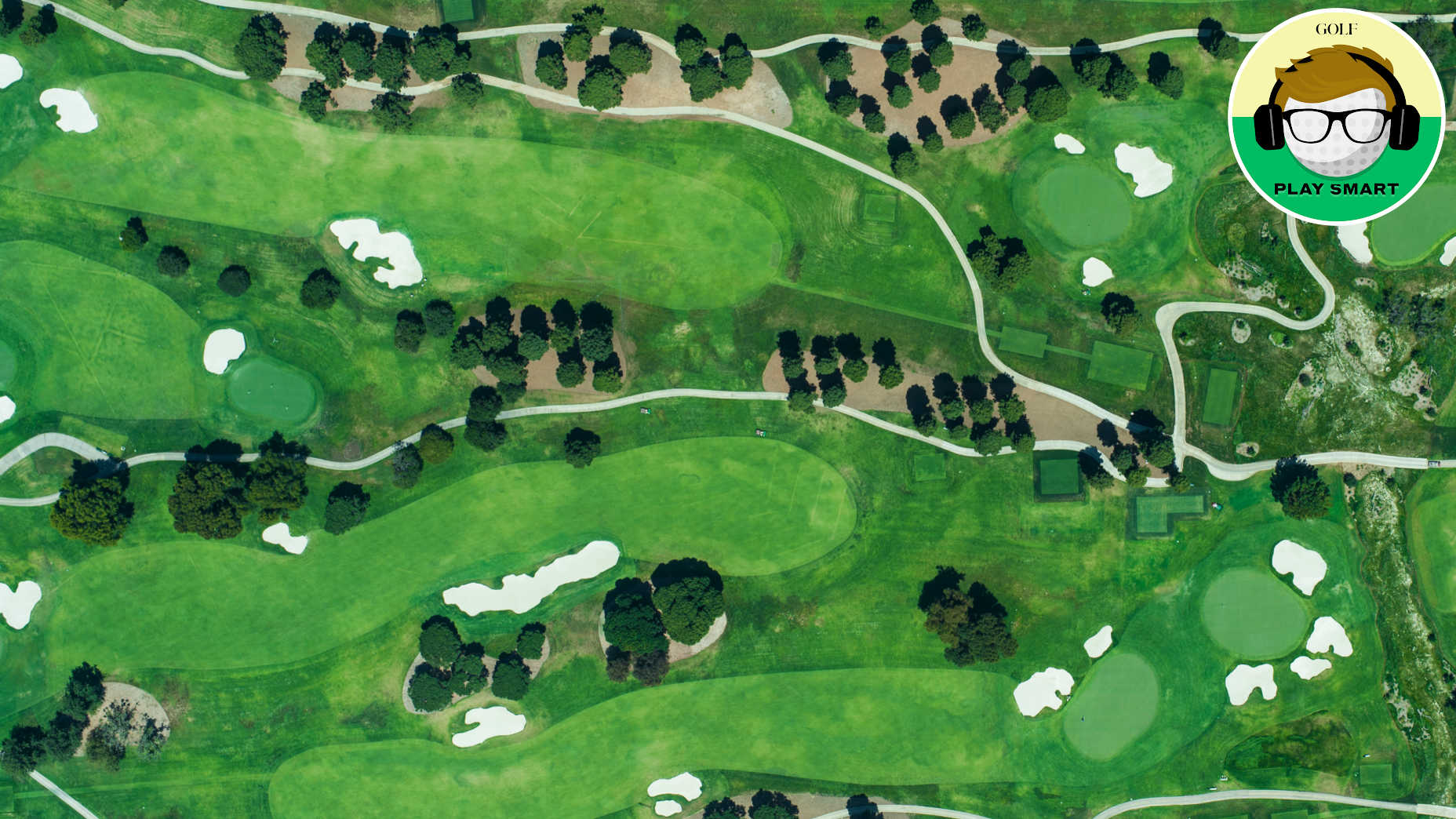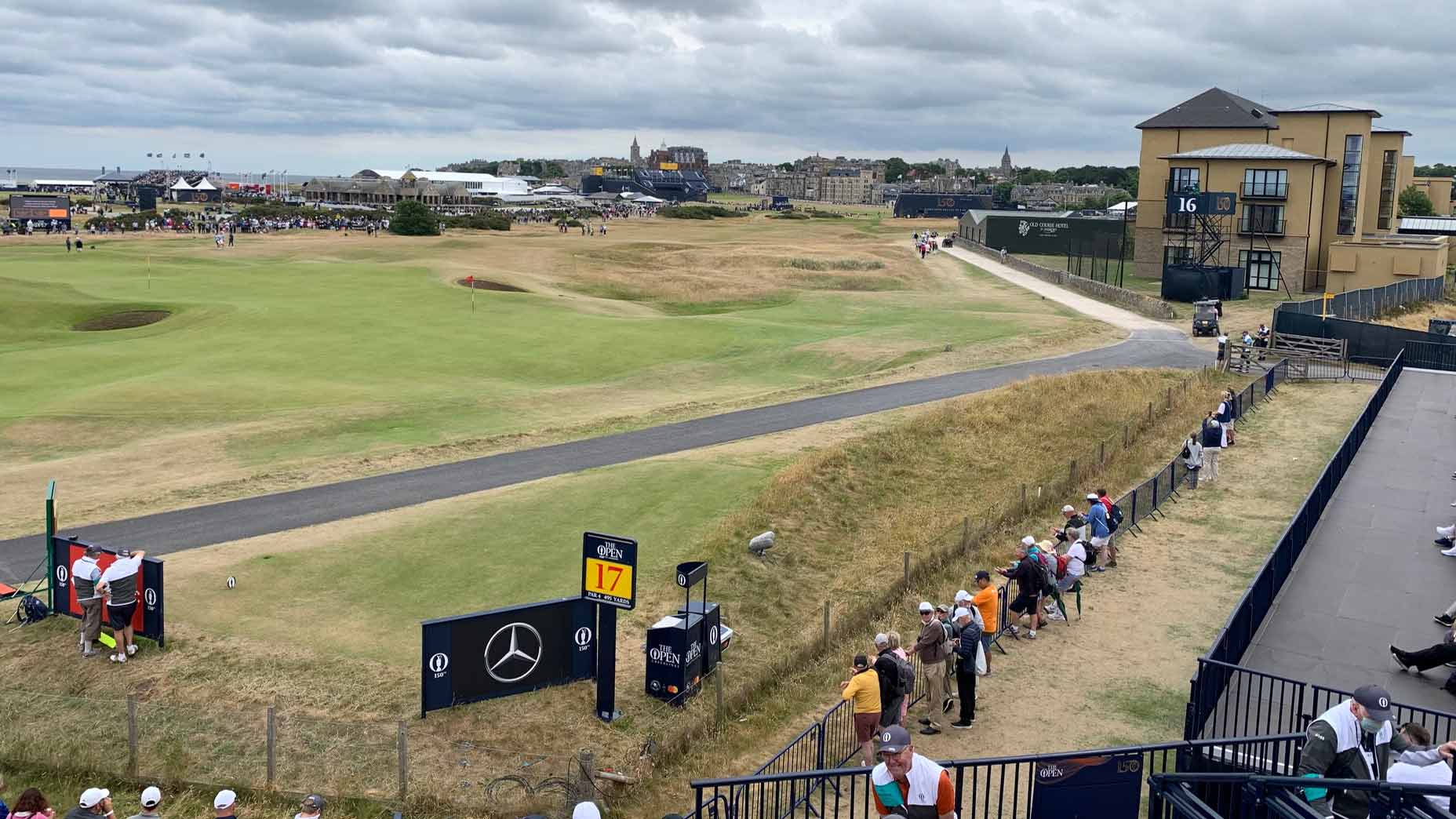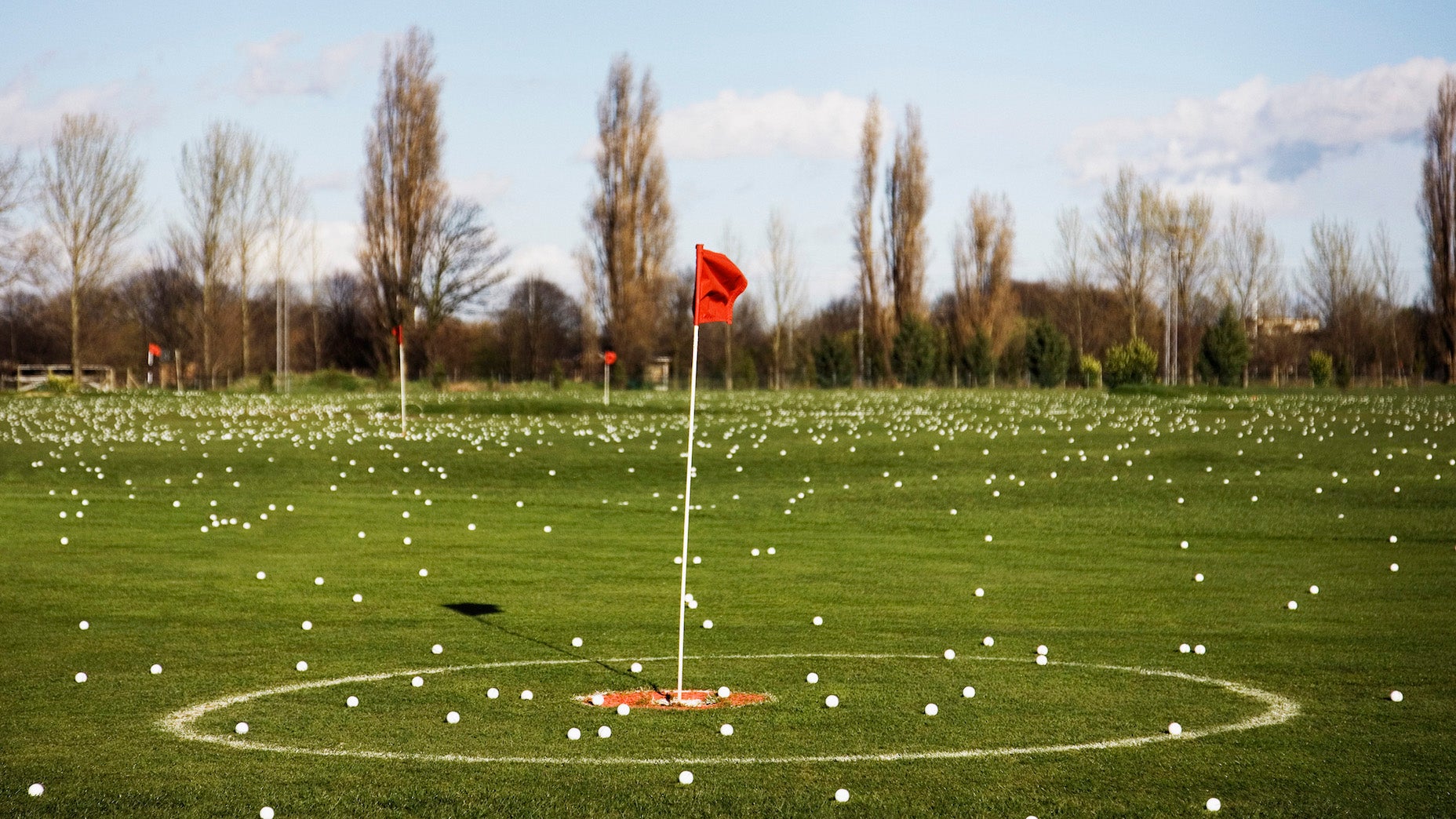4 basic golf strategy rules to remember, according to a +3 handicap
- Share on Facebook
- Share on Twitter
- Share by Email

You don't need to play perfectly in order to shoot a good score, if you play smart.
Getty Images
InsideGOLF: +$140 Value
Just $39.99
You don't need to play perfectly in order to shoot a good score, if you play smart.
Getty Images
Welcome to Play Smart, a game improvement column and podcast from editor Luke Kerr-Dineen to help you play smarter, better golf.
Golf is a game of misses. We’ve all heard that cliche, because it’s true. So why is it then that so many amateur golfers plan for the perfect shot?
You can listen to the full podcast below, or keep scrolling. Or, ideally, both!
You can subscribe to the Play Smart podcast on Apple here, or on Spotify right here.
As I alluded to above, one of the most common mistakes is that they aim at the most obvious place, not necessarily to best place. Rather than aiming at the middle of the fairway, Play Smart podcast co-host and +3 handicap Reed Howard says to employ best practices from the DECADE Golf system and aim between the hazards. The areas on either side of the hole that represent a penalty (like water or out of bounds) or trees.
“You should be aiming in between the dead zones, and that doesn’t necessarily mean the center of the fairway,” Howard says. “People might be surprised to learn that pros are very, very rarely aiming down the center of the fairway, and they’re very rarely aiming directly at pins.”

Another suggestion that Reed offers is to find a shot that you’re comfortable with. It can be a right-to-left draw, or a left-to-right fade. And while ideally the curve won’t be too severe, it’s not the worst thing in the world if it is. It’s more important, as GOLF Top 100 Teacher Nick Clearwater says, that you have some level of predictability over where your bad shots are going to go.
Another tip Howard offers is to work backwards from the green. You may want to hit your shot right at the pin, but plan ahead for where the easiest up-and-down might be, so that in the event of a miss you’ll still be in good shape.
“When I was just starting, I said to myself, ‘Every green I’m going to figure out where my easiest up-and-down is, and I’m going to aim between the center of the green, and there,’” he says.

The sad fact of the matter is that most amateur golfers tend to miss short. They overestimate how far they hit the ball, and leave themselves in a bad spot because of it.
You could do worse than clubbing up each time, but Howard explains a method he used to use:
“Not many amateur players may have a Trackman, or Foresight, like the pros,” he says. “Something I used to do was after I hit a shot on the course, I’d step off the number of yards it came up short or long, then kept track.”
So if you hit a 7-iron from 155 yards to the middle, and it comes up a little short, walk to the middle of the green and step off the number of yards back to your ball. Be mindful of pace of play, of course, and you don’t need to do it on every shot. But when you do, you’ll start getting a better idea of how far you actually hit the ball.

Golf.com Contributor
Luke Kerr-Dineen is the Game Improvement Editor at GOLF Magazine and GOLF.com. In his role he oversees the brand’s game improvement content spanning instruction, equipment, health and fitness, across all of GOLF’s multimedia platforms.
An alumni of the International Junior Golf Academy and the University of South Carolina–Beaufort golf team, where he helped them to No. 1 in the national NAIA rankings, Luke moved to New York in 2012 to pursue his Masters degree in Journalism from Columbia University. His work has also appeared in USA Today, Golf Digest, Newsweek and The Daily Beast.